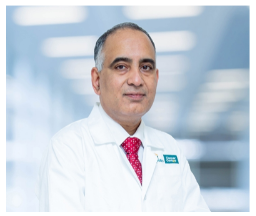- Surgery
- Radiation
- Medical Oncology
- Treatment of benign tumours is surgery. Although mixed tumours are benign, they will recur after surgery unless they are completely removed. The aim of the operation is to completely excise the tumour with an adequate margin of normal tissue. In parotid surgery, preserving the facial nerve is the real challenge.
- Magnification with a surgical loupe or microscope helps in identification as well as preservation of facial nerve and its branches.
- Facial nerve monitoring is a simple, effective adjunct method that is available to surgeons to assist with the functional preservation of the facial nerve during parotid surgery.
- Types of surgery are:
-
Enucleation- It is the complete removal of the tumour. This technique of tumour removal is often inadequate, and most of the time, the tumour recurs.
When the tumour recurs in the parotid region, the facial nerve is at a greater risk of damage during repeat surgery than it was during the initial surgery. - Parotidectomy – It is the removal of a portion of the affected salivary gland. If the tumour is small and easy-to-access, the surgeon may remove the tumour and a small portion of healthy tissue surrounding it.
- Superficial Parotidectomy – When the tumour is in the superficial lobe, it is removed along with the superficial lobe of the parotid gland after identifying and preserving the facial nerve and its branches.
- Total Parotidectomy – When a tumour arises in the parotid gland deep to the facial nerve (deep lobe), the facial nerve is dissected off the deep lobe containing the tumour, and the tumour deep to the nerve is removed along with the remaining parotid tissue.
- Removal of the entire salivary gland/ Total Excision of the Salivary gland – This is done when the tumour extends into nearby structures such as the facial nerves, the ducts that connect the salivary glands, facial bones and skin. The entire salivary gland is removed along with these affected structures.
-
Surgical treatment for malignant tumours of the parotid depends on its extent.
The facial nerve is normally preserved unless the patient has facial nerve paralysis before surgery or the nerve is found to be directly invaded or surrounded by a malignant tumour.
When the facial nerve needs to be divided, it is repaired. The facial nerve can be reconstructed using a nerve graft, e.g., the greater auricular or sural nerves. -
For low-grade salivary gland tumours, complete excision is a sufficient treatment.
For high-grade salivary gland tumours, radiation therapy is recommended with/without chemotherapy.


